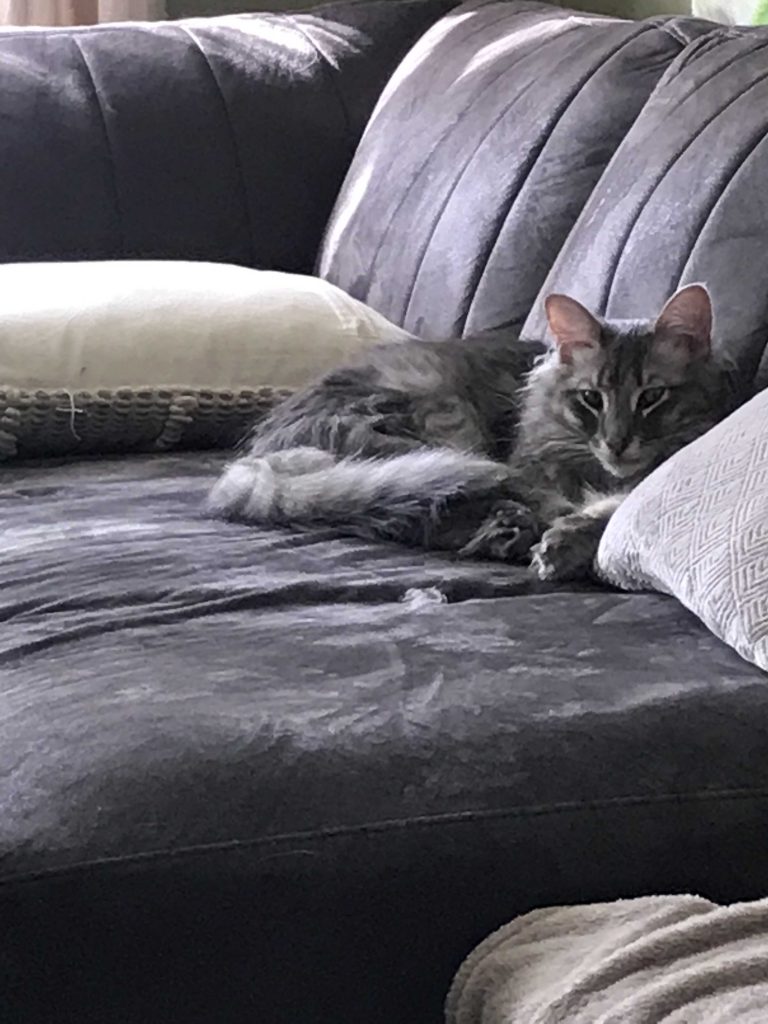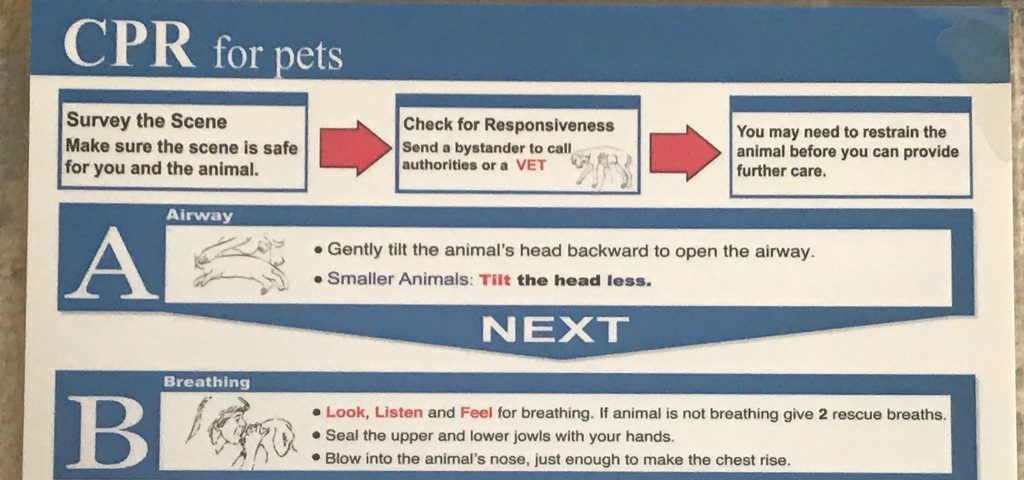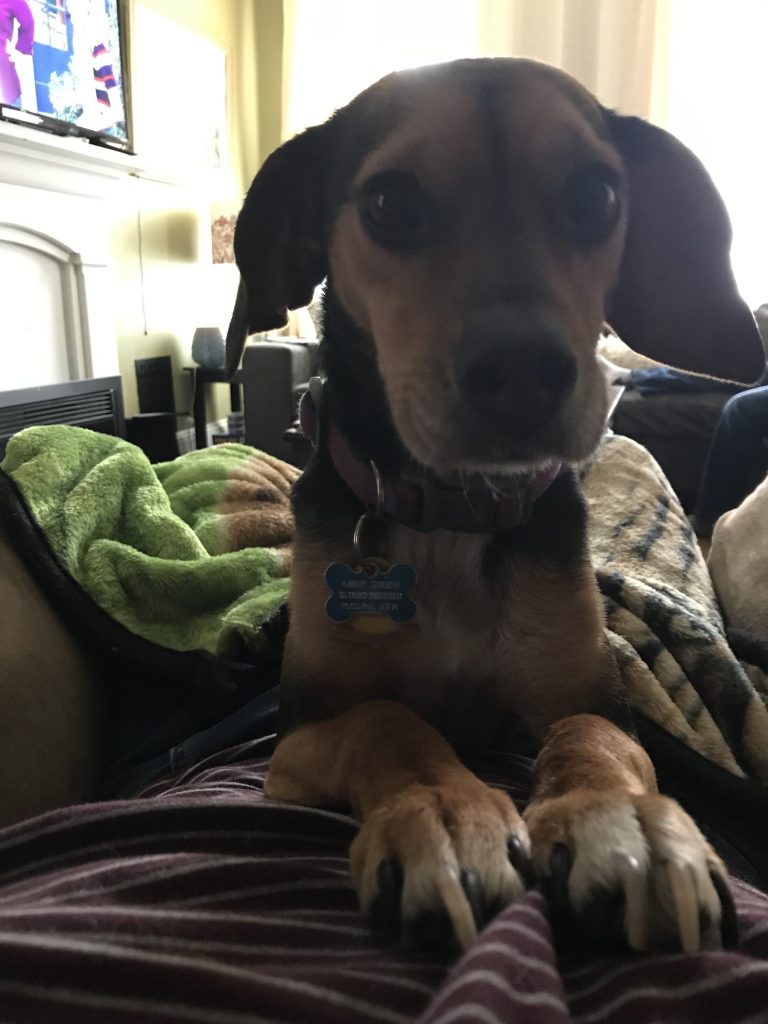By Leanne Shelton
At Shoen Safety & Training, we love our pets, and we know you do too! We get a lot of requests for pet first aid information. In response, we have decided to write this blog post with some basic pet first aid.

Wound Care
If your pet is bleeding, apply direct pressure with a clean, sterile dressing. Bandage the wound with overlapping layers. If the blood soaks through, do not remove the dressing. Place another layer on top. Call the vet for any injury that needs a bandage.
If your pet has an object embedded in its body, DO NOT remove it. Bandage around the object and try to maintain a normal body temperature (see chart below). Seek veterinary care.
Burns
Burn treatment for pets is similar to human treatment. Remove the source of the burn. Cool 1st degree burns with running water. DO NOT apply water to a 2nd or 3rd degree burn. Cover 2nd and 3rd degree burns with a clean, sterile dressing. Try to maintain a normal body temperature. Seek veterinary care. Do not apply ice.

Muzzling Your Pet
Use a leash, belt, tie, panty hose, ace bandage, or any material you have available. Make a loop. Wrap the item around the center of the animal’s jaws just above the nose. Tie a half-knot above the upper jaw. Make several additional wraps around the jaw. Bring the two remaining loose ends behind the ears from under the chin. Tie them together securely in a bow knot.
Poisoning
If you suspect that your pet has been poisoned, call your vet and poison control. The number for poison control is 1-800-222-1222. Signs of poisoning may include vomiting, if your pet has a strange odor, diarrhea, shock, red eyes, tremors, seizures, and/or bleeding.
Seizures/Convulsions
If your pet is seizing or convulsing, move any objects near your pet that may cause injury. Protect your pet’s head. Do not try to restrain your pet. Do not stick anything in your pet’s mouth. Remember details for your vet such as a description of what happened, the length of the seizure, and how many the pet had. Seek veterinary care.

Shock
Signs that your pet is in shock may include restlessness, anxiety, change in responsiveness, and/or gray tongue or gums. If you suspect that your pet is in shock, open the airway and perform rescue breathing if necessary. Control any bleeding your pet may be having. Try to maintain a normal body temperature. Try to soothe and relax your pet. Seek veterinary care.
Heat Exhaustion
Signs that your pet is experiencing heat exhaustion may include rapid panting, high heart rate, red gums, and/or vomiting. Bring your pet inside, or get it away from the source of heat. Cool your pet by wetting it’s coat. Apply cool, wet cloths to the groin, armpits, and neck. Seek veterinary care.
Cold Weather-Related Illness
Get your pet out of the cold environment. Do not rub any area affected with frostbite. Warm you pet by applying blankets, warm water, heat, jacket, etc. Seek veterinary care.

Pet CPR
Remember ABC – Airway, Breathing, Circulation
Airway – Gently tilt your pet’s head backward to open the airway.
Breathing – Look, listen, and feel for breathing. If your pet is not breathing, give 2 rescue breaths. Seal the upper and lower jowls with your hands. (Jowls are fleshy or drooping cheeks.) Blow into the nose just enough to make the chest rise.

Circulation – Check for a pulse.
There are 3 places to check for a pulse for cats and dogs.
1 – On the chest wall just behind the elbow.
2 – On the inside of the leg where it meets the body.
3 – Just below the ankle on the side of the paw.
If there is no pulse, begin compressions.
| Compressions for Cat and Dogs Less Than 30 lbs | Compressions for Dogs Over 30 lbs |
| Encircle the chest with your hands on the rib cage where the point of the elbow meets the chest wall. | Place the heel of one hand on the rib cage where the point of the elbow meets the chest wall. Place the other hand on top and interlock your fingers. |
| Rhythmically squeeze the chest 15 times at a rate of at least 100 times per minute. | Compress straight down 15 times at a rate of at least 100 times per minute. |
| Allow the chest to fully recoil between every compression. | Allow the chest to fully recoil between every compression. |
| Give 2 rescue breaths. | Give two rescue breaths. |
| Continue compressions and breaths until sign of life or advanced care has taken over. | Continue compressions and breaths until sign of life or advanced care has taken over. |
Choking
Open your pet’s mouth to see if there is an obstruction. If you can see the object, try to remove it using tweezers or something similar. Clasp the object and pull gently. If you cannot see the object or if you cannot remove it, begin abdominal thrusts.
Face your pet’s spine and place your arms around your pet. Make a fist, place your thumb side right below the pet’s front legs, and press inward and up against the chest. Repeat until the object is removed.
| Normal Vital Signs | Dogs | Cats |
| Temperature | 100F – 102.5F | 99F – 102.5F |
| Respiration | 10-30 per minute | 10-32 per minute |
| Heart Rate | 60-120 per minute | 120-180 per minute |
| Average Gestation | 63 days | 63 days |
Bonus Fact

One of the most common misconceptions about dogs is that a dog’s mouth is cleaner than a human’s mouth. This is not true. The short explanation is that there is different bacteria in a dog’s mouth. There is some overlap, but the germs are mostly not compatible with humans. You should not, however, let your dog lick your open wound. Also, if your dog eats a raw food diet, you can contract salmonella from your dog. Also, you should be careful if your dog raids your cat’s litter box too!
For more information, contact Shoen Safety and Training. To learn CPR and First Aid and become American Red Cross certified, register for a CPR/First Aid class with Shoen Safety and Training. There are a lot of options available to fit your schedule. The peace of mind that you’ll get from knowing how to respond in an emergency situation is priceless.





